New York State is home to some of the most fascinating animals in the country. From the distinguished peregrine falcon to the tiny but mighty pygmy snaketail, there’s an abundance of species to be found in New York.
Animals native to New York State include the American black bear, gray foxes, beavers, and raccoons. The state is also home to many endangered and threatened species, including the leatherback sea turtle and the piping plover.
Living in New York State we often take for granted the natural wildlife that we have all around use. We take a look at what we see in our backyards. Keep reading to learn more about the animals that add character and diversity to the state of New York.
1. Black Bear
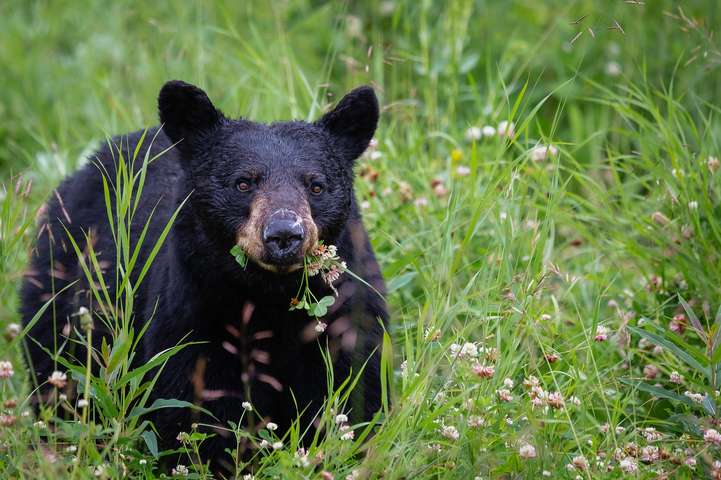
New Yorkers can find black bears throughout the Adirondack, Catskill, and central-western regions. They’re not typically aggressive toward people, but they can be dangerous to humans if they feel threatened or become accustomed to being fed.
Despite their name, black bears can come in various colors, including:
- Brown
- Beige
- Tan
- Light brown
Males typically weigh around 300 pounds (136 kilograms), while females can reach 170 pounds (77 kilograms). Black bears are excellent tree climbers and good swimmers. They are mostly active at night and spend most of their time searching for food.
2. Bobcat
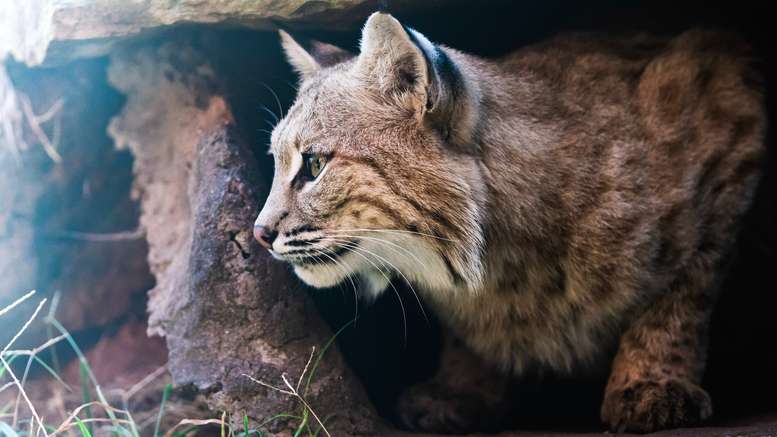
People from upstate New York are no strangers to the bobcat, a wild cat species native to the state. The bobcat is a medium-sized cat, but it can sometimes weigh more than 30 pounds (13.6 kilograms).
Bobcats are solitary but curious animals that may hunt throughout the day. While they are typically found in wooded areas, bobcats will travel into more urban areas in search of food.
3. Gray Fox
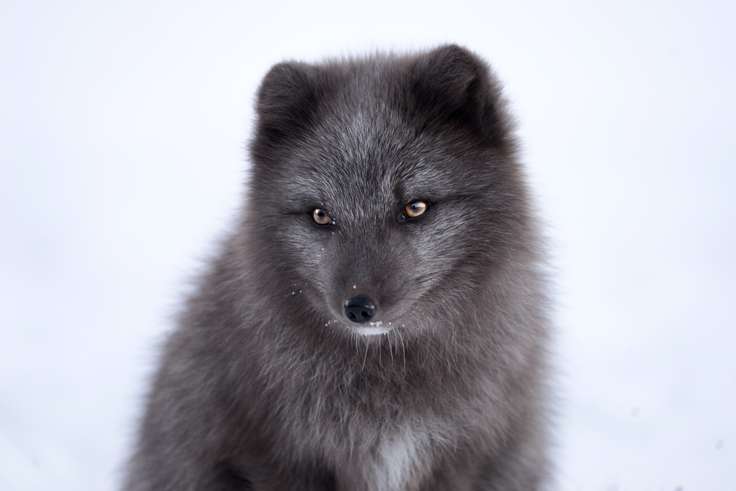
Gray foxes are cunning little predators native to the state and can be found in wooded areas. Though they’re often mistaken for their red cousins, gray foxes are easily distinguished by their silver-gray fur and black-tipped tails. They’re also smaller than red foxes, weighing only 7-13 pounds (3-5 kilograms).
Despite their size, gray foxes are fierce hunters. Their main prey sources include rodents, rabbits, and other small animals. However, they are also known to eat birds, reptiles, and fruit.
As the number of gray foxes in New York continues to grow, so does their impact on the state’s ecosystem. These adaptable predators play an important role in controlling the populations of their prey species.
4. White-Tailed Deer
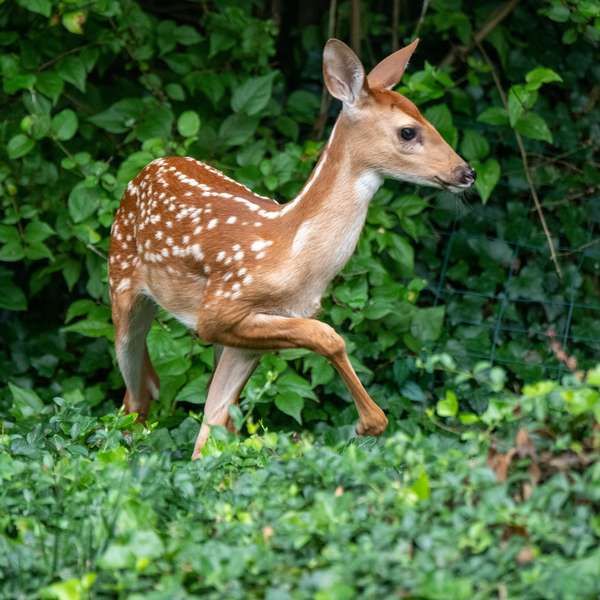
White-tailed deers are a common sight in the Bronx and Staten Island, but they can be found in nearly every county in New York. Though they are most often seen in forested areas, they can also be found in open fields and suburban neighborhoods.
The white-tailed deer is the smallest species of the North American deer family, and they can reach a maximum weight of 150 pounds (68 kilograms). Their coat is reddish-brown in the spring and summer but turns grayish-brown in fall and winter.
Deer are herbivores, which means they only eat plants. Their diet consists mostly of plants, grasses, and leaves, but they will also eat nuts and fruits during the fall season.
5. Beaver
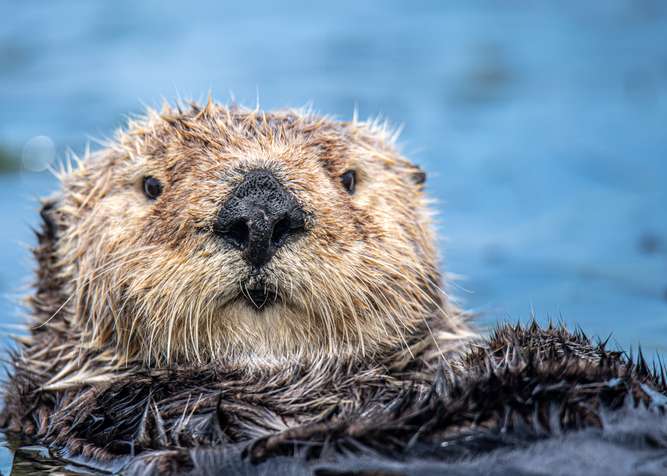
Beavers are not only native to New York, but they’re also the state’s official mammal. The animals are attracted to New York because of its many streams and rivers, which provide them with their ideal shelter environment.
These furry rodents can be found throughout the state and are most abundant in the waterways and mixed forests of the Adirondacks. Today, beavers can be seen in Staten Island and New York City. While some people see them as a nuisance, others welcome them as a sign of a healthy ecosystem.
In recent decades, deforestation played a role in the decline of the beaver population as trees were cut down for timber and wood products. Deforestation left fewer habitats for the animals to live and reproduce in.
However, New Yorkers find these creatures to be fascinating animals, and there have been efforts to reintroduce beavers in the Adirondacks.
6. American Mink
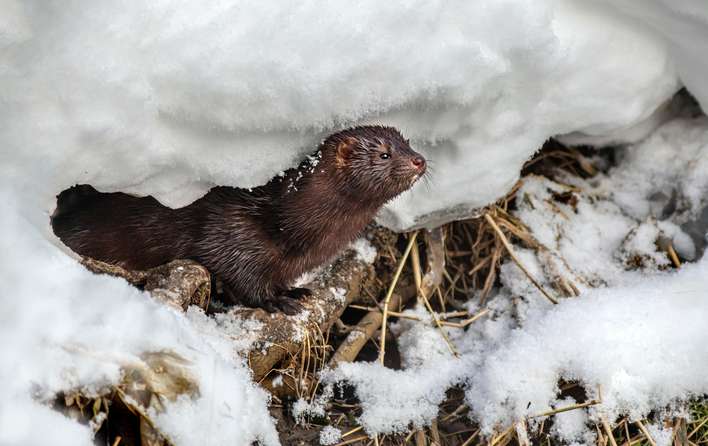
The American mink is a small, semi-aquatic mammal native to New York and many parts of North America.
American minks are excellent swimmers and climbers, and they are known for their playful nature. They are also very curious creatures, which often leads them into trouble. Mink typically live in dens near water sources, such as streams or ponds.
Minks are carnivores, and their diet consists mostly of fish, crayfish, frogs, and rodents. In the wild, minks will also eat birds and small mammals. Minks are very good swimmers who often dive into the water to catch their prey. Minks have sharp teeth and claws, which help them kill and eat their prey.
7. Raccoons
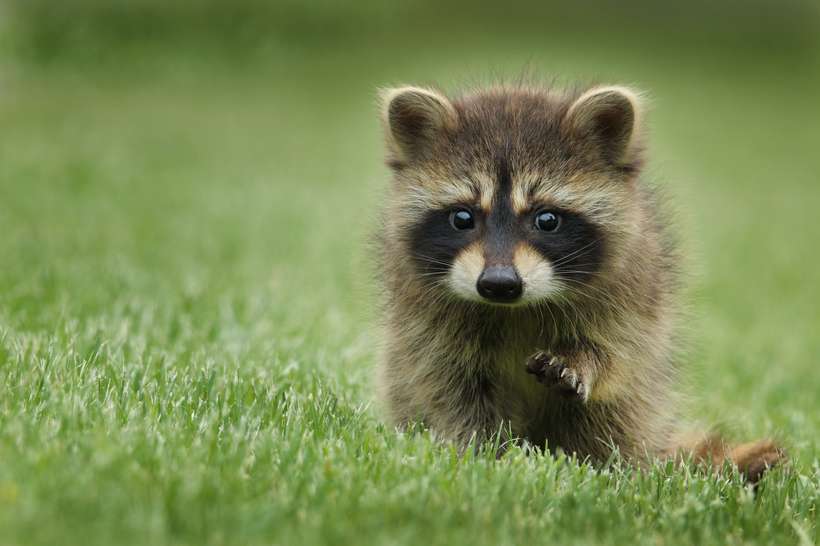
Raccoons are native to New York and play an important role in the state’s ecosystem. These resourceful, opportunistic eaters will scavenge for food wherever they can find it, and this behavior has led to them becoming a nuisance for some people.
However, New Yorkers can’t deny that their antics are often seen as cute or comical. Recently, there has been a surge in the number of raccoons in urban areas as they adapt to life around humans.
Despite their reputation as pests, raccoons are an important part of the ecosystem and help control populations of unwanted rodents and other small animals. They also play a role in dispersing seeds and spreading plant life through their droppings.
8. Tundra Swan
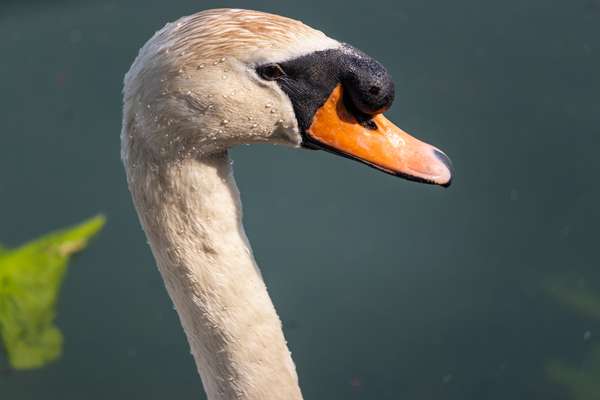
The tundra swan is an all-white bird with a black bill native to New York and often seen in the wild. These swans are interesting birds to watch, and their gracefulness is a wonder to behold.
Tundra Swans are one of the smaller swan species in New York, and their white plumage is striking against the backdrop of northern landscapes. Tundra swans breed in the remote arctic regions of North America and spend the winters in southern states and along the Pacific and Atlantic coasts.
Although they are called “tundra” swans, much of their time is actually spent in the water, where they feed on aquatic plants.
9. Virginia Opossum

Virginia opossums are adaptable animals living in various habitats, including urban areas. It’s no wonder why these animals are native to New York.
Virginia opossums are nocturnal and live in trees or burrows. They are excellent climbers and good swimmers.
While their diet consists mostly of insects and small animals, they will also eat fruit, garbage, and carrion. Their diet makes them unpopular with some people, but they are actually beneficial to have around as they help control the population of pests.
10. New England Cottontail
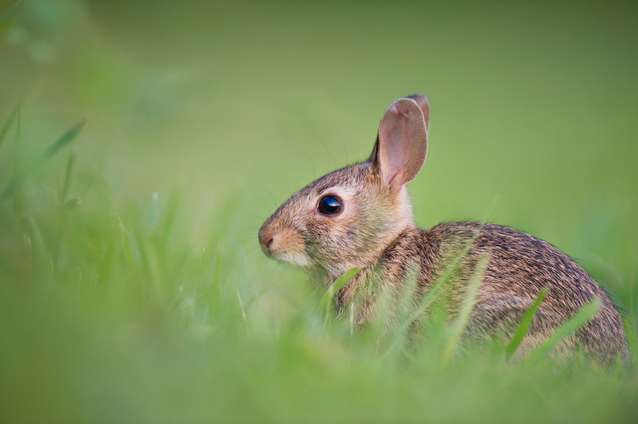
The New England cottontail is a rabbit species native to New York. This small mammal has a brownish-gray coat with a white underside. They have long ears and short tails. Adults typically weigh about 2 pounds (1 kilogram).
In New York State, New England, cottontails can be found in woodlands, brushy areas, and fields. They make their nests in underground burrows or under dense vegetation. New England cottontails are active during the day and night. They feed on various plant foods, including twigs, buds, leaves, fruits, and seeds.
While some people may view the presence of New England cottontails in New York as a nuisance, others see it as an opportunity to learn more about this interesting animal. If you’re lucky enough to spot one of these rabbits, take the time to enjoy watching it and learn about its behavior.
11. Seaside Sparrow
The seaside sparrow is a small, plump songbird with short legs and a squared-off tail. Its upper parts are pale gray, and the underparts are whitish. Seaside sparrows breed in salt marshes along the coast, and they are native to New York. They build their nests in clumps of marsh grasses. Seaside sparrows eat insects and seeds. In winter, they sometimes eat berries.
One characteristic that is known about these birds is that they are social creatures. They often live in flocks, and they will pair bonds to find food or build nests. Seaside sparrows also have a few vocalizations to communicate with each other.
12. Peregrine Falcon
Peregrine Falcons are one of the fastest animals in the world, capable of flying at speeds of up to 186 miles (300 km) per hour. They’re also some of the most elusive birds, known to nest on ledges and cliffs in remote locations. They have dark blue-gray plumages on their backs and heads, with white throats and breasts. Peregrine falcons prey on small birds such as pigeons and doves.
In the 1970s, Peregrine Falcons were nearly wiped out due to the use of pesticides like DDT. However, thanks to conservation efforts, they’ve made a strong comeback in recent years. Today, an estimated 25 pairs of Peregrine Falcons live in New York City. Seeing a Peregrine Falcon soar through the skies is truly a sight to behold.
13. Golden Eagle
The Golden Eagle is truly a magnificent bird. With its striking gold and brown plumage, it’s no wonder why this bird is so popular. Golden eagles are found throughout the contiguous United States, Canada, and Alaska, but they’re most commonly seen in western states like New York. While these birds typically mate for life, golden eagles will sometimes form pairs with other eagles if their mate dies.
The Golden Eagle is one of North America’s largest birds of prey, with a wingspan of up to 78 inches (1.9 meters). These powerful birds are known for their impressive hunting skills, as they are able to take down animals much larger than themselves. If you’re lucky enough to see a Golden Eagle in New York, it’s sure to be an unforgettable experience.
14. Queen Snake
The queen snake is a nonvenomous snake found in North America and native to New York. These snakes are typically between 15 inches (38 centimeters) and 24 inches (60 centimeters), and they have black and white stripes running the length of their bodies.
Queen snakes are found in various habitats, including forests, wetlands, and grasslands. They typically prey on small rodents, but they will also eat frogs, lizards, and other small animals. Queen snakes give birth to live young, and a single female can lay up to 30 offspring at a time.
Queen snakes are generally shy and will often try to avoid contact with humans. If they feel threatened, they may coil up their bodies and hiss, but they rarely bite. Queen snakes are mostly inactive during the day and prefer to hunt for their food at night.
15. Leatherback Sea Turtle
The leatherback sea turtle is the largest of all living turtles and is one of the most migratory marine animals in the world. These turtles get their name from the leathery texture of their carapace, which is black with white spots. Leatherbacks are found in all oceans except the Arctic and Antarctic and are native to New York. They can live to be 60-70 years old.
Despite their large size and long life span, leatherback sea turtles are endangered due to human activity. The biggest threat to these turtles is the use of fishing nets, which can cause them to get entangled and drown. Climate change is also a major threat, as it causes changes in ocean temperature and currents that can disrupt the turtles’ breeding cycles.
Fortunately, many organizations are working to protect leatherback sea turtles. These organizations work to raise awareness about the threats these turtles face and lobby for better protection of their habitat.
16. Wild Turkey
When most people think of turkeys, they think of the domesticated bird that is commonly served at Thanksgiving. However, a wild variety of turkey also appears on Staten Island and is native to New York. The wild turkey is an interesting animal with many unique behaviors and physical characteristics.
The wild turkey is a large bird, with most males weighing up to 25 pounds (11 kilograms). They are typically brown in color, with some black and white feathers mixed in. The males have a long beard-like feather that hangs down from their necks. Both male and female turkeys have wattles, which are fleshy growths on their neck that can be red, blue, or purple.
Turkeys are social animals and live in flocks. They are also very noisy, making various sounds, including gobbles, clucks, and yelps.
17. Piping Plover
Piping plovers are small, stocky shorebirds native to New York. They have short necks and legs. Adults have pale gray upperparts and white underparts, with a black band on the breast. The head is white with a black line through the eyes.
Piping plovers nest on sandy beaches, gravel bars, and shell beds near water. The female lays four eggs in a scrape lined with shells and vegetation. Both parents incubate the eggs for about three weeks. The chicks are precocial, meaning they can walk and feed themselves soon after hatching.
Piping plovers are interesting birds because of their breeding habits. They mate for life and often return to the same beach where they were born to breed.
18. Salamander
Salamanders are amphibians that are often mistaken for lizards. There are over 600 species of salamander, making them the largest group of amphibians in the world. Salamanders can be found on every continent, and various salamander species are native to New York.
The majority of salamanders live in moist environments, such as wetlands and rainforests. They range in size from 4-6 inches (10-15 centimeters) long.
Salamanders are generally nocturnal creatures, meaning they are most active at night. During the day, they can be found hiding under rocks or logs or in burrows underground. When it comes to predators, salamanders have more to worry about than just about any other animal—many known predators, including snakes, birds, and raccoons, eat them!
19. Black Redhorse
The black redhorse is a freshwater fish native to New York and many areas of North America. It can grow up to 15 inches (38 centimeters) long.
These fish get their name from the black coloration on their fins and body. They’re usually found in rivers and streams with rocky bottoms and clear water.
They feed on aquatic insects, small shrimp, and roundworms. The fish spawn in late spring or early summer, and the female can lay up to 6,000 eggs at a time. The black redhorse fish is also an important part of the ecosystem, as it helps keep the water clean.
20. Pygmy Snaketail
The pygmy snaketail is a small but mighty insect. This little creature is only about 1.5 inches (37 millimeters) long, but it packs a powerful punch. Despite its small size, the pygmy snaketail is a fierce predator. It uses its long, thin tail to strike at its prey. The tail is also used to help the insect climb trees and other tall plants.
The pygmy snaketail is native to New York and can be found in wooded areas throughout North America. It’s a fascinating creature that plays an important role in its ecosystem. Found in wooded areas and gardens, these little creatures help control the insect population. Without them, we’d be overrun with pests!
These creatures are fascinating to watch as they go about their business. They are very shy and secretive, but if you’re patient, you may be fortunate enough to catch sight of one.
